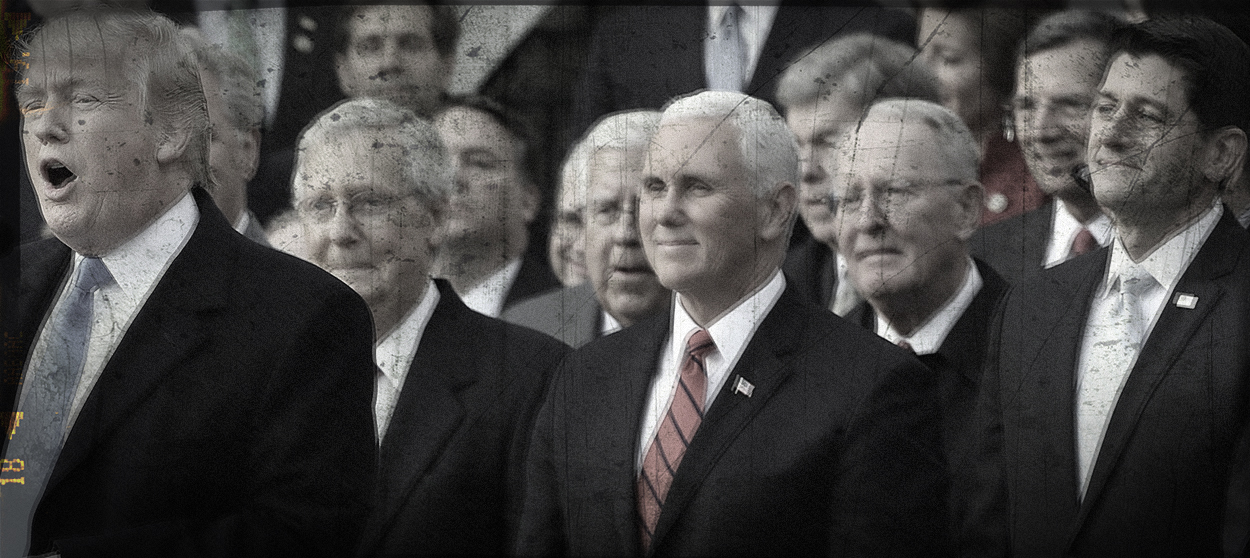Repeal and replace the Trump tax cuts
That's the best way to make good on the president's new middle-class tax cut pledge


Bad news for shopaholics already looking forward to having some extra cash for Black Friday: There is a zero percent chance President Trump will cut middle-class taxes by 10 percent after the November elections. And if you just read the preceding sentence, then you've probably given the idea about as much thought as Trump did before blurting out that $2 trillion promise.
Congressional Republicans were sure surprised — maybe because there are no plans on Capitol Hill to make Trump's middle-class tax pledge happen. Trump Tax Cut 2.0 is in no way a serious policy proposal. It's total vaporware.
Even so, it's meant to address a serious political problem: Republicans aren't getting much electoral oomph from the centerpiece of Trumponomics. And they know it. A recent survey commissioned by the Republican National Committee and obtained by Bloomberg News found that by a margin of 61 percent to 30 percent, respondents said the 2017 tax law benefits "large corporations and rich Americans" over "middle-class families." That finding helps explain why Trump emphasized that this new tax cut idea of his was for "middle-income people … not for business."
The Week
Escape your echo chamber. Get the facts behind the news, plus analysis from multiple perspectives.

Sign up for The Week's Free Newsletters
From our morning news briefing to a weekly Good News Newsletter, get the best of The Week delivered directly to your inbox.
From our morning news briefing to a weekly Good News Newsletter, get the best of The Week delivered directly to your inbox.
But there's a problem. While such a tax cut might not be for businesses, it probably wouldn't be just for the middle class, either. Cutting middle-income tax rates means that all the income earned at those levels is subject to lower rates — even income earned by millionaires and billionaires. Recall that Trump's Tax Cut and Jobs Act slashes all tax rates, including those at the top. And it's those cuts — along with the business tax cuts — that have apparently helped persuade most voters that they're not benefitting much or really at all. (That, even though all income groups are getting tax cuts this year — assuming gains aren't offset by the import tax hikes of the Trump tariffs.) Meanwhile, Democrats are taking advantage of this voter perception by promising to repeal Trump's tax cuts and replace them with cash payouts for the poor and working class. And since the GOP didn't much care that its tax cuts would worsen federal debt and deficits, Democrats aren't too concerned that their spending plan could do the same.
All this was easily predictable and avoidable for Republicans. Ideally they should have proposed a tax cut that did three things: boost business investment, obviously increase worker take-home pay, and pay for itself. Sure, that would have meant making some hard choices, such as not cutting top income tax rates for the wealthiest Americans in a time of rising debt and increased inequality. Indeed, those personal tax cuts are the ones that do the least for long-term economic growth while also generating the most red ink.
Things could have been different. For instance: A better way to provide middle-class tax relief would have been through a cut in the payroll taxes used to fund Social Security and Medicare. Some two-thirds of U.S. households with annual incomes below $100,000 pay more in payroll taxes than income taxes. A two percentage point reduction in total payroll taxes would have increased the after-tax income of a household with $50,000 in earned income by $1,000. That's a nice chunk of change. And a payroll tax cut could have been paid for by limiting it to middle-class households and curbing tax breaks that mostly help wealthier Americans. Moreover, lost revenue from the deep cut in corporate taxes — to 21 percent from 35 percent — could have been offset by higher capital gains taxes. Or perhaps Republicans could have chosen less severe corporate rate cuts in favor of permanent full expensing of new capital investment.
To be clear: Cutting the uncompetitive corporate tax rate was a good idea. Not paying for the rate reduction certainly wasn't.
A free daily email with the biggest news stories of the day – and the best features from TheWeek.com
Like I said, hard choices. But that's what serious governments do when their debt levels have doubled over the past decade and are on track to continue ballooning. Of course, the Trump tax cuts are hardly the final word on tax reform. The personal rate cuts are due to expire in 2025, while the temporary expensing provision begins to phase out at the end of 2022. At the same time, budget deficits will continue to worsen, due in part to the original Trump tax cuts. A new forecast from Goldman Sachs predicts the federal budget gap to reach $1 trillion (4.7 percent of GDP) in 2019, $1.1 trillion (5.1 percent) in 2020, and nearly $1.3 trillion in 2021 (5.5 percent).
Maybe it's time for Republicans to think about repealing and replacing the Trump tax cuts.
James Pethokoukis is the DeWitt Wallace Fellow at the American Enterprise Institute where he runs the AEIdeas blog. He has also written for The New York Times, National Review, Commentary, The Weekly Standard, and other places.
-
 How to financially prepare for divorce
How to financially prepare for divorceThe Explainer Facing ‘irreconcilable differences’ does not have to be financially devastating
-
 Why it’s important to shop around for a mortgage and what to look for
Why it’s important to shop around for a mortgage and what to look forThe Explainer You can save big by comparing different mortgage offers
-
 4 ways to save on rising health care costs
4 ways to save on rising health care costsThe Explainer Health care expenses are part of an overall increase in the cost of living for Americans
-
 Bari Weiss’ ‘60 Minutes’ scandal is about more than one report
Bari Weiss’ ‘60 Minutes’ scandal is about more than one reportIN THE SPOTLIGHT By blocking an approved segment on a controversial prison holding US deportees in El Salvador, the editor-in-chief of CBS News has become the main story
-
 Has Zohran Mamdani shown the Democrats how to win again?
Has Zohran Mamdani shown the Democrats how to win again?Today’s Big Question New York City mayoral election touted as victory for left-wing populists but moderate centrist wins elsewhere present more complex path for Democratic Party
-
 Millions turn out for anti-Trump ‘No Kings’ rallies
Millions turn out for anti-Trump ‘No Kings’ ralliesSpeed Read An estimated 7 million people participated, 2 million more than at the first ‘No Kings’ protest in June
-
 Ghislaine Maxwell: angling for a Trump pardon
Ghislaine Maxwell: angling for a Trump pardonTalking Point Convicted sex trafficker's testimony could shed new light on president's links to Jeffrey Epstein
-
 The last words and final moments of 40 presidents
The last words and final moments of 40 presidentsThe Explainer Some are eloquent quotes worthy of the holders of the highest office in the nation, and others... aren't
-
 The JFK files: the truth at last?
The JFK files: the truth at last?In The Spotlight More than 64,000 previously classified documents relating the 1963 assassination of John F. Kennedy have been released by the Trump administration
-
 'Seriously, not literally': how should the world take Donald Trump?
'Seriously, not literally': how should the world take Donald Trump?Today's big question White House rhetoric and reality look likely to become increasingly blurred
-
 Will Trump's 'madman' strategy pay off?
Will Trump's 'madman' strategy pay off?Today's Big Question Incoming US president likes to seem unpredictable but, this time round, world leaders could be wise to his playbook
